#data capture solution
Explore tagged Tumblr posts
Text
Data Capture Services: Costs, Benefits, and Options

In the digital era of the data centric business world, data has become one of the most valuable assets for businesses across industries. However, it is very crucial to collect the data with high-quality results and from the most trusted resources. Data capture services play a vital role in getting the accurate information collected in the most efficient way and easy to process form.
Data capture services are the comprehensive services of automated data collection, data extraction, and processing of such raw data from various sources, like forms, documents, images, and websites. The goal of data capture services is to ensure that businesses can use this data for improving operational efficiency and decision-making processes.
In this blog we will cover the costs, benefits, and alternative options of data capture services, to help you understand the importance of investing in the right tools and choose the best service provider for your organization.
What Are Data Capture Services?
Data capture services are used to convert data from physical or digital forms into various easy to access structured forms in the most usable formats. This process typically involves technologies such as optical character recognition (OCR), machine learning (ML), and automated data entry to extract accurate data for processing and analysis purposes.
Here are some examples of data capture services inclusions:
Document scanning: Scanning physical documents to convert the data into digital formats.
Data extraction: Extracting relevant information from scanned PDF documents, PNG or JPG images, or other document formats.
Web scraping: Collecting data from trusted and secure online sources and websites.
Survey and form data entry: Capturing data from various forms, applications, and surveys depending on the types of industry.
Barcode and RFID data capture: Automatically collecting information from barcodes or RFID tags and decoding the information stored.
Costs of Data Capture Services
The cost of data capture services can vary widely as it depends on several factors like the volume of data to be processed, the complexity of capturing the data, the data extraction task, and the technology required to perform the services. You can understand the costing on the basis of following factors:
Type of Service:
Manual data entry: This is typically the least expensive way of data capture but also the slowest and most error-prone. Manual data capturing is often used for small-scale tasks where automation is not required or can be costly.
Automated data capture: Using OCR, machine learning, or AI technologies, automated services are faster and more accurate. However, they tend to come with higher upfront costs due to the technology infrastructure required.
Web scraping services: The cost for web scraping services can vary based on the complexity of the data being gathered, the number of websites, and the frequency of data capture. This service can be relatively low-cost for small-scale scraping projects but can become expensive as scale increases.
Custom solutions: For businesses with unique or complex data capture needs, custom solutions tailored to specific workflows can be expensive due to the level of design and development required.
Volume of Data
The more data that needs to be captured, the higher the cost. Automated solutions generally work better for large datasets, but the cost still increases proportionally with the volume. Subscription-based models or pay-per-record pricing are common in data capture services, which means costs can fluctuate depending on how much data you need captured.
Quality and Accuracy
Accuracy-driven services that require high precision (for example, in legal, healthcare, or financial documents) may come at a premium. Such services often involve more detailed review processes to ensure that data errors are minimized.
Benefits of Data Capture Services
Data capture services offer a wide range of advantages including quality results, operational efficiency and cost savings on your in-house expenses. Here are some of the key benefits:
1. Improved Efficiency
Automating the data collection and extraction process can significantly reduce manual labor. This leads to faster processing times, increased productivity, and the ability to handle larger volumes of data at once.
2. Accuracy and Reduced Errors
Human data entry is prone to errors, which can have significant repercussions on business decisions. Data capture services, especially those powered by AI and machine learning, improve data accuracy and consistency.
3. Time and Cost Savings
Automating the data capture process allows employees to focus on higher-value tasks, such as analysis and decision-making, rather than spending time on manual data entry. In the long run, this leads to lower operational costs and better resource allocation.
4. Enhanced Decision-Making
Accurate and timely data collection leads to better insights. With clean, organized, and up-to-date data, businesses can make informed decisions quickly, improving customer experiences, operational strategies, and product development.
5. Scalability
As your business grows, so does the need for data. Data capture services can scale with your business, ensuring that even large volumes of data are captured and processed efficiently.
6. Better Compliance and Security
Data capture services can ensure that your organization remains compliant with industry regulations by maintaining accurate and organized records. Additionally, professional data capture providers adhere to strict security standards to protect your data.
Options for Data Capture Services
There are several types of data capture services, each designed for specific use cases. Here are some of the most common options:
1. OCR (Optical Character Recognition)
OCR technology allows businesses to extract text from scanned documents, PDFs, and images. This is one of the most popular options for converting paper records into editable and searchable formats.
2. Web Scraping and Data Mining
If you need data from websites, web scraping services can help you extract information like prices, product details, and competitor insights. Data mining involves analyzing large datasets to uncover patterns and useful information.
3. Barcode and RFID Data Capture
This type of data capture is used in logistics, retail, and inventory management. Scanning barcodes and RFID tags enables quick and accurate data collection for items, reducing human error and speeding up the process.
4. Form and Survey Data Capture
Collecting data from forms or surveys manually can be time-consuming. Data capture services automate the extraction of responses, whether from paper forms, online forms, or surveys, saving time and ensuring accurate data processing.
5. Custom Solutions
For businesses with unique needs, custom data capture solutions are available. These services can be tailored to capture data from various sources, integrate with existing systems, and meet specific requirements, although they tend to be more expensive.
Conclusion
Data capture services offer businesses an efficient and accurate way to gather, organize, and process data. Whether you’re looking to automate document scanning, capture data from web sources, or process large volumes of customer information, data collection services provide an invaluable resource for enhancing productivity and decision-making. While the costs can vary depending on the type and volume of data, the benefits far outweigh the initial investment, making data capture a powerful tool for businesses in any industry.
When choosing a data capture service, it’s important to assess your business’s specific needs, budget, and the type of data you’re working with to determine the best solution. As technology continues to evolve, so will the capabilities of data capture services—offering businesses even more opportunities for growth, efficiency, and success.
Source Link: https://dataentrywiki.blogspot.com/2025/06/data-capture-services-costs-benefits-and-options.html
#Data Capture Services#Data Capture Outsourcing#Outsourcing Data Capture#Outsourcing Data Capture Services#Outsource Data Capture Services#Data Capture Solution
0 notes
Text
Top 5 Intelligent Data Capture Solutions Companies in 2024
Intelligent data capture
Intelligent data capture (IDC) is a process of automatically extracting data from unstructured and semi-structured documents using artificial intelligence (AI) and machine learning (ML) technologies.
IDC solutions can be used to capture and process data from a wide variety of documents, including invoices, purchase orders, contracts, medical records, and more. IDC solutions typically use a combination of OCR, NLP, and AI to extract data from documents.
OCR is used to convert scanned images of documents into text. NLP is used to understand the meaning of the text and identify key data points. AI is used to learn from the data and improve the accuracy of the data extraction process over time.
Why is IDC important?
Intelligent data capture (IDC) is important because it helps businesses to automate the data capture process, which can lead to significant efficiency gains, improved data quality, reduced costs, and enhanced compliance.
IDC solutions can be used to capture and extract data from a wide variety of documents, including invoices, purchase orders, contracts, medical records, and more. This data can then be used to improve a variety of business processes, such as order fulfilment, customer service, and financial reporting.
IDC solutions are also becoming increasingly important as businesses move to digitize their operations. By automating the data capture process, businesses can reduce their reliance on manual data entry, which can free up employees to focus on more strategic tasks. Overall, IDC is an important technology that can help businesses to improve their efficiency, productivity, and profitability.

Top 5 Intelligent Data Capture Solutions Companies in 2024
1) Data Capture Solutions
Data Capture Solutions (DCS) is a company that specializes in creating custom data capture systems. They offer a variety of hardware and software solutions, as well as services to support their customers throughout the data capture process. DCS partners with other companies to provide these solutions, ensuring that their clients have access to the latest and most effective technologies. Whether you need a simple system for capturing basic data or a complex system for handling large volumes of data, DCS can help you find the right solution for your needs.
2) Scanflow
Scanflow is an innovative AI-powered data capture tool that leverages smart devices to scan and capture information. It’s adept at handling various tasks, from scanning text and barcodes to processing ID documents. Scanflow’s capabilities extend beyond mere data capture, as it can also automate workflows and streamline processes, ultimately enhancing efficiency. Imagine using Scanflow to track inventory in a warehouse or verify customer IDs at a retail store – these are just a few examples of its versatility.
Scanflow boasts numerous advantages, including increased accuracy, reduced costs, and improved efficiency. Its user-friendly interface and seamless integration with existing systems make it an attractive option for businesses seeking to optimize their data capture processes. So, if you’re looking for a powerful and versatile tool to elevate your data capture game, Scanflow is definitely worth considering.
3) Anyline
Anyline’s platform is designed to be easy to use, even for people who are not familiar with data capture technology. The platform uses computer vision and machine learning to automatically extract data from images, so there is no need for manual data entry. Anyline also offers a variety of SDKs and APIs that make it easy to integrate their platform into existing applications. One of the benefits of using Anyline is that it can be used with existing smartphones and tablets. This means that businesses do not need to purchase any new hardware in order to start using Anyline’s platform. Anyline also offers a variety of subscription plans that make it affordable for businesses of all sizes.
4) Scandit
Scandit specializes in mobile barcode scanning and smart data capture solutions. They empower businesses by transforming everyday smartphones and tablets into powerful data acquisition tools. Imagine capturing barcode, text, ID documents, faces, and other visual data effortlessly, with lightning speed and high accuracy. This eliminates the need for bulky dedicated scanners and opens up a world of possibilities for streamlining workflows, boosting productivity, and enhancing customer experiences. From retail checkout and logistics to healthcare and field services, Scandit’s technology seamlessly integrates into existing apps and processes, delivering tangible value across diverse industries.
5) Dynamsoft
Dynamsoft is a company that specializes in data capture software. They offer a variety of products that can help businesses automate their data capture processes. Dynamsoft’s software is used by a wide range of organizations, from small businesses to large enterprises.
One of the benefits of using Dynamsoft’s data capture software is that it can save businesses time and money. By automating data capture, businesses can eliminate the need for manual data entry, which can be a slow and error-prone process. Dynamsoft’s software can also help businesses improve the accuracy of their data. By using optical character recognition (OCR) technology, Dynamsoft’s software can extract data from documents with a high degree of accuracy.
1 note
·
View note
Text
Medical Charge Capture Apps - maxRVU

Maximize your revenue with maxRVU, the leading medical charge capture app trusted by healthcare professionals nationwide. With maxRVU, physicians can quickly and accurately capture charges at the point of care, ensuring no revenue is lost. HIPAA-compliant, easy to use, and integrated with major EHRs, maxRVU streamlines documentation and billing for faster reimbursements. Say goodbye to lost paper trails and hello to effortless charge capture. Whether you're in a hospital, clinic, or private practice, maxRVU makes charge entry smart and simple. Start optimizing your practice today with
#medical charge capture app#medical virtual scribe#hipaa compliant messaging#charge capture#medical billing solutions#patient data management
0 notes
Text
the first rule of using pointers is have fun and be yourself
#been doing some definitly unsafe shit for advent of code#didnt want to do propper bounds checking today so my solution relies on the fact that the data is 140x140 and my matrix is 150x150#yesterday was a little odd aswell cause i was doing like pattern matching without regex#don't think my solution was super unsafe or anything but pointer arithmetic is not something ive done in the past really#tried re-writing it w/ regex (in C) but i discovered the hell that is different regex versions#spent way too long figuring out how regex.h (POSIX regex lib) worked only to discover that POSIX regex is like... not very good...#like posix regex doesnt even have non-capturing groups???#(and regex101.com doesnt support POSIX ere/bre)#ended up writing a pretry swanky solution w/ regex in python and someone in my school's AOC discord put it in a oneliner lol
0 notes
Text
Automated Data Capture Solutions help businesses gather and process large volumes of data efficiently. By automating data collection, organizations can reduce human error, save time, and increase accuracy. This enhanced data accuracy provides actionable insights that improve decision-making. Whether it’s processing invoices or extracting customer information, data capture technology streamlines operations and ensures businesses stay competitive. Adopting these solutions allows companies to focus on critical areas, ensuring a faster response to market demands and driving growth.
#automated data capture solutions#Data Capture Solutions#Data Capture#data capture company#Data Capture Services#Data Collection#Data Collection Services
0 notes
Text

Transform Data Capture with OMR Home’s Precision Software Solutions
0 notes
Text
Octalsoft Unveils Fresh Brand Identity and Website, Elevating the eClinical Software Experience
In an ever-evolving landscape of healthcare and clinical research, innovation is the key to staying ahead. Octalsoft, a renowned name in the world of eClinical software solutions, has embraced this concept and embarked on a journey to redefine its presence in the industry. The unveiling of Octalsoft's new brand identity and website signifies a bold leap forward, reimagining our commitment to delivering top-notch software solutions for clinical research.
Octalsoft's New Look

The rebranding of Octalsoft is more than just a cosmetic change; it represents a deeper commitment to its core values of innovation, excellence, and customer-centricity. The new logo features a modern, dynamic design that symbolizes Octalsoft's forward-looking approach. With its sleek lines and vibrant orange color palette, the logo is a visual representation of the company's dedication to creating innovative eClinical solutions.
The color orange in the new logo signifies innovative energy, passion, and determination. It represents Octalsoft’s unwavering commitment to delivering exceptional solutions and services to its clients while keeping in lockstep with the pace of technological evolution.
The website, too, has undergone a significant transformation. It is now more user-friendly, and intuitive while continuing to be a comprehensive platform that offers a wealth of information about Octalsoft's products and services. Navigating through the website is an effortless experience, allowing visitors to explore Octalsoft's suite of eClinical solutions and gain valuable insights into our capabilities.
Octalsoft's new website showcases a sleek and modern design that prioritizes user experience, making it effortless for clients, partners, and visitors to explore its comprehensive suite of eClinical solutions and resources. Users can now navigate with ease, accessing valuable insights, case studies, and thought leadership articles that provide a deep understanding of the latest eClinical trends and innovations. The website serves as a hub for staying updated with the evolving eClinical landscape and is also one of the primary touchpoints to engage with Octalsoft’s experts.
The Journey of Transformation
Octalsoft's decision to revamp its brand identity and website was rooted in a desire to enhance the overall user experience for its clients, and to position the company as a market leader with a global footprint. This transformation reflects Octalsoft's unwavering commitment to staying at the forefront of the eClinical software industry.
But, why is Octalsoft considered a market leader in eClinical software solutions?
Innovative Solutions: Octalsoft has always been at the forefront of innovation in the eClinical software space. Our solutions are designed to streamline clinical trial processes, making them more efficient and cost-effective.
Comprehensive Suite: Octalsoft offers a comprehensive suite of eClinical software solutions, including Electronic Data Capture (EDC), Randomization and Trial Supply Management (RTSM), Clinical Trial Management System (CTMS), ePRO, eDOCs, RSDV and LMS among others. This comprehensive approach simplifies trial management for researchers and clinicians.
Customer-Centric Approach: Octalsoft prides itself on its customer-centric approach. We understand that every clinical trial is unique, and work closely with our clients to tailor solutions that meet their specific needs.
Global Presence: Octalsoft's footprint extends across the globe, serving clients in North America, Europe, Asia, and beyond. Our diverse client base reflects the versatility of our eClinical software solutions.
LeaderSpeak
"The launch of our new website and brand identity is a pivotal moment in Octalsoft's journey," said Mr. Hiren Thakkar, MD at Octalsoft. "We have always aimed to be at the forefront of eClinical innovation, and these changes reflect our commitment to being the trusted partner for our clients and partners as they navigate the ever-evolving eClinical landscape."
“Octalsoft invites clients, partners, and eClinical enthusiasts to explore the new website, engage with fresh content, and embark on this exciting journey toward a brighter and more innovative eClinical future.”
The Future of eClinical Software
Octalsoft's revamped brand identity and website serve as a testament to the company's commitment to advancing the field of eClinical software. The healthcare and clinical research industry is constantly evolving, and the demand for robust, user-friendly solutions is on the rise.
Octalsoft is not merely keeping pace with these changes; we are setting the bar higher. With our new look, we are ready to embark on an exciting journey that will redefine the eClinical software landscape.
In Conclusion
Octalsoft's rebranding and website transformation are more than just cosmetic changes; they represent a renewed commitment to excellence, innovation, and customer satisfaction.
As a market leader in eClinical software solutions, Octalsoft is well-positioned to continue shaping the future of clinical research and healthcare with its cutting-edge solutions and customer-centric approach. If you haven't visited our new website yet, click here to do so NOW!
#electronic data capture software#clinical trial management system#clinical trial management software#clinical trial software#clinical trial solutions
0 notes
Text
One such solution is the implementation of an Electronic Invoice Management System
In the digital age, businesses are constantly seeking ways to streamline their operations and improve efficiency. One such solution is the implementation of an Electronic Invoice Management System. This system allows businesses to manage their invoicing process online, reducing the need for physical paperwork and improving accuracy.
An Online Invoice Management System is a tool that automates the invoicing process, from order capture to payment receipt. It eliminates manual errors, speeds up the billing cycle, and improves customer satisfaction.
Order Capture Management is another crucial aspect of business operations. It involves recording customer orders accurately and efficiently, ensuring that the right products or services are delivered on time.
For businesses using SAP software, integrating these systems can be a complex task. This is where SAP Data Integration Services come into play. These services help businesses integrate their various systems and processes, allowing for seamless data flow and improved operational efficiency.
There are several SAP Data Integration Solutions available in the market today. These solutions provide a range of tools for integrating data from different sources, including databases, applications, and services.

One such tool is the SAP Data Integration Tool, which provides a comprehensive platform for data integration tasks. It supports a wide range of data sources and targets, allowing businesses to integrate their data seamlessly.
For businesses that rely heavily on order management, SAP for Order Management is an ideal solution. This system provides a comprehensive set of tools for managing orders, from capture to fulfillment.
SAP Integration Services are essential for businesses that want to integrate their SAP systems with other software or services. These services provide the necessary tools and expertise to ensure seamless integration.
Many businesses prefer to work with an SAP Integration Services Company Online. These companies offer a range of SAP integration services, including software development, consulting, and support.
SAP Integration Software is a key component of any SAP integration project. This software provides the necessary tools for integrating SAP systems with other software or services.
Similarly, SAP Integration Solutions provide a comprehensive set of tools and services for integrating SAP systems. These solutions include software, consulting services, and support.
The SAP Interface Tool is another important tool for SAP integration projects. This tool allows businesses to create custom interfaces for their SAP systems, enabling them to integrate with other software or services more easily.
For businesses that need to manage large volumes of orders, the SAP Order Management System is an ideal solution. This system provides a comprehensive set of tools for managing orders, from capture to fulfillment.
If you’re looking for an SAP Services Solutions Company Online, there are many options available. These companies offer a range of SAP services, including software development, consulting, and support.
The SAP BTP Cloud, or Business Technology Platform Cloud, is a comprehensive platform for building and running business applications. It provides a range of services and capabilities, including data management, analytics, application development, and integration.
The SAP BTP Cockpit is a web-based interface that provides a centralized location for managing all aspects of your SAP BTP environment.
For businesses using SAP S/4HANA, the SAP S4 interface provides a user-friendly way to access and manage your SAP systems.
E-Invoicing in SAP is a feature that allows businesses to send electronic invoices directly from their SAP system. This feature simplifies the invoicing process and improves accuracy.
Finally, Pre Sales Activities in SAP involve using SAP tools to manage and track pre-sales activities such as lead generation and customer engagement.
In conclusion, whether you’re looking for an online invoice management system or an SAP integration tool, there are many solutions available to help streamline your business operations.
For More Info: -
SAP btp cloud
SAP btp cockpit
SAP s4
0 notes
Text
Unlock Efficiency With Automated Data Capture Solutions
Investing in automated data collection services helps streamline the data-gathering process. By partnering with Damco Solutions, you can achieve a significant competitive edge while lowering operational expenses. Entrusting us with automated data capture solutions empowers you to concentrate on strategic business activities and foster the growth of your company.

0 notes
Text
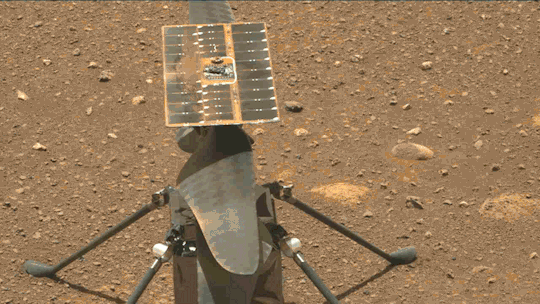
What We Learned from Flying a Helicopter on Mars

The Ingenuity Mars Helicopter made history – not only as the first aircraft to perform powered, controlled flight on another world – but also for exceeding expectations, pushing the limits, and setting the stage for future NASA aerial exploration of other worlds.
Built as a technology demonstration designed to perform up to five experimental test flights over 30 days, Ingenuity performed flight operations from the Martian surface for almost three years. The helicopter ended its mission on Jan. 25, 2024, after sustaining damage to its rotor blades during its 72nd flight.
So, what did we learn from this small but mighty helicopter?
We can fly rotorcraft in the thin atmosphere of other planets.
Ingenuity proved that powered, controlled flight is possible on other worlds when it took to the Martian skies for the first time on April 19, 2021.
Flying on planets like Mars is no easy feat: The Red Planet has a significantly lower gravity – one-third that of Earth’s – and an extremely thin atmosphere, with only 1% the pressure at the surface compared to our planet. This means there are relatively few air molecules with which Ingenuity’s two 4-foot-wide (1.2-meter-wide) rotor blades can interact to achieve flight.
Ingenuity performed several flights dedicated to understanding key aerodynamic effects and how they interact with the structure and control system of the helicopter, providing us with a treasure-trove of data on how aircraft fly in the Martian atmosphere.
Now, we can use this knowledge to directly improve performance and reduce risk on future planetary aerial vehicles.

Creative solutions and “ingenuity” kept the helicopter flying longer than expected.
Over an extended mission that lasted for almost 1,000 Martian days (more than 33 times longer than originally planned), Ingenuity was upgraded with the ability to autonomously choose landing sites in treacherous terrain, dealt with a dead sensor, dusted itself off after dust storms, operated from 48 different airfields, performed three emergency landings, and survived a frigid Martian winter.
Fun fact: To keep costs low, the helicopter contained many off-the-shelf-commercial parts from the smartphone industry - parts that had never been tested in deep space. Those parts also surpassed expectations, proving durable throughout Ingenuity’s extended mission, and can inform future budget-conscious hardware solutions.

There is value in adding an aerial dimension to interplanetary surface missions.
Ingenuity traveled to Mars on the belly of the Perseverance rover, which served as the communications relay for Ingenuity and, therefore, was its constant companion. The helicopter also proved itself a helpful scout to the rover.
After its initial five flights in 2021, Ingenuity transitioned to an “operations demonstration,” serving as Perseverance’s eyes in the sky as it scouted science targets, potential rover routes, and inaccessible features, while also capturing stereo images for digital elevation maps.
Airborne assets like Ingenuity unlock a new dimension of exploration on Mars that we did not yet have – providing more pixels per meter of resolution for imaging than an orbiter and exploring locations a rover cannot reach.
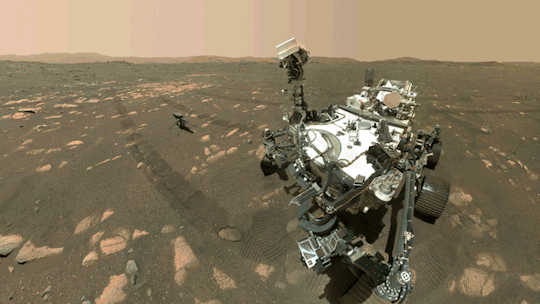
Tech demos can pay off big time.
Ingenuity was flown as a technology demonstration payload on the Mars 2020 mission, and was a high risk, high reward, low-cost endeavor that paid off big. The data collected by the helicopter will be analyzed for years to come and will benefit future Mars and other planetary missions.
Just as the Sojourner rover led to the MER-class (Spirit and Opportunity) rovers, and the MSL-class (Curiosity and Perseverance) rovers, the team believes Ingenuity’s success will lead to future fleets of aircraft at Mars.
In general, NASA’s Technology Demonstration Missions test and advance new technologies, and then transition those capabilities to NASA missions, industry, and other government agencies. Chosen technologies are thoroughly ground- and flight-tested in relevant operating environments — reducing risks to future flight missions, gaining operational heritage and continuing NASA’s long history as a technological leader.
youtube
You can fall in love with robots on another planet.
Following in the tracks of beloved Martian rovers, the Ingenuity Mars Helicopter built up a worldwide fanbase. The Ingenuity team and public awaited every single flight with anticipation, awe, humor, and hope.
Check out #ThanksIngenuity on social media to see what’s been said about the helicopter’s accomplishments.
youtube
Learn more about Ingenuity’s accomplishments here. And make sure to follow us on Tumblr for your regular dose of space!
5K notes
·
View notes
Text
“ Raph pleasssseee carry me?” Mikey whined, practically throwing himself onto Raph's shell.
And who was Raph to deny his babyest brother?
“ alright, but you're gonna have to carry me, later,” He chuckled, mostly teasing, “ Raph knows you can carry him easy”
Mikey rolled his eyes and climbed further atop Raph's shell, being mindful of the chunk missing. He said it didn’t hurt anymore, but Mikey still avoided touching it if he could.
“ You don't normally whine this much, Angelo, what happened to your ‘razzmatazz energy reserve’?” Donnie muttered, hovering a bit ahead of them. Eyes still glued to Leo's little blue dot. It was moving rapidly across the city st this point, and they were following it.
Donnie wasn't sure how or why Leo was moving so quickly, but he was sure his twin had some kind of hare-brained plan he was cooking up. Sure, chasing him down was almost definitely playing into it, but Donnie just wanted to be sure.
Maybe the amnesia spell had erased his ability to make good plans or something, they didn't have much data that proved otherwise.
“ Wellll, Leo usually portals us everywhere aaaaand I guess I got kinda used to it,” Mikey chuckled sheepishly, “plus I gotta save up that razzmatazz reserve for lovingly kicking his butt when we catch up!”
“Uh-huh, right. The plan is simple, when we catch up you and Raph will immobilize Leo long enough for me to tranq him, then we’ll get him back to the lair and figure out a better long-term solution,” Donnie rambled, squinting at the dot. He was moving in such an irregular pattern, and far faster than Leo could normally move.
Then again, he was the fastest out of all of them, and he could be portal-hopping across the city still.
They were hardly close to catching up, though. Even with Donnie's hover-shell, he couldn't get close fast enough. Not to mention he couldn't carry both Mikey and Raph as backup.
He sighed, rubbing his eyes and then resuming his staring at the dot. Until it suddenly turned and was heading straight for them.
“ He's coming this way and quickly! Get ready to grab him,” Donnie warned, hurrying to ready his final tranquilizer dart and hide himself behind a trash can. Not the best hiding spot or best view of the street, but better than nothing.
He watched as the dot blinked closer and closer, turning onto the street they were hiding on. Raph and Mikey were ready, weapons drawn, to capture Leo just long enough for Donnie to tranq him. It was all going to plan!
Their amnesiac brother was toast!
Leo’s dot rounded the corner, and-
Donnie aimed at the spot where Leo's shoulder would be, but instead there was nothing. The dot was right in front of him and yet-
Donnie lowered his gun and grimaced. In Leo's place was a rat, the tracker tied loosely around it's neck. A tag hung there too, and when Donnie grabbed the rat to read it, all he could feel was a white hot rage.
‘ Gotcha XP Better luck next time!’
----
Damn they got splinter'd :/
Donnie should have known that Leo would do smthn that ridiculous but cut him some slack, his goofy twin is on the loose :/
Anyway enjoy <3 this one isn't v good but eh
Part 1 | Part 6 | Part 8
#rottmnt#art#fanart#digital art#rottmnt fanart#rottmnt leo#comic#rottmnt fanfic#rottmnt comic#rottmnt art#50au#rottmnt50au
132 notes
·
View notes
Text
Frogman's Camera Buying Guide
A few weeks ago someone asked if I could recommend an interchangeable lens camera (ILC) to supplement their smartphone photos and hopefully get better pictures of important things like vacations and pets.
I decided to go very extra with my response and due to that... I'm still not finished with it.
I'm worried I am letting this person down because they did not ask for a giant post explaining every detail about cameras in the history of forever.
So I am going to do a camera recommendation post without as much explanation and hopefully I can finish the giant post at some point in the near future.
If you want to take better pictures you are probably going to need a camera with a decent sized sensor, a fast lens, a tripod, and a flash.
The bigger sensor gives you more dynamic range so you can capture brighter and darker things in the photo.
A fast lens has a giant hole in the front that lets in a ton of light. That hole is called the aperture and the bigger it is, the better your photos in dark environments will be. So you will want something that does f/1.8 or f/1.4 (lower f-stop number = bigger hole = more light). This can also help you get a lot of cool background blur.
A tripod will help get you longer exposures without any blur from camera shake. Especially good for landscape photos.
And a flash is for taking photos of pets and other moving subjects when you are indoors and don't have a lot of light. A flash is an absolute game changer for indoor photos.
HOWEVER, never point it directly at your subject.
Point it at a large white ceiling or wall. The flash happens so fast that it freezes motion. It is how I got all of my indoor photos of Otis.
Here he was playing and being rambunctious and he is not blurry.


I used no special settings. I just stuck on a flash and pointed it at the ceiling and suddenly sheep are sticking to things.
Oh, and one other huge benefit of using a flash... you can take much better photos of pets with dark fur. So if you have a cute little void in your home, a flash can help you capture detail in their fur.


Just lift the shadow slider in your image editor and that beautiful fur will reveal itself.
If you get an ETTL or TTL flash, it will output the correct amount of light automatically. You can literally just put your camera in automatic mode, aim the flash at the ceiling, and press the shutter button.
Before I talk about recommendations I want to make one thing very clear.
GETTING A GIANT CAMERA WILL NOT AUTOMATICALLY GIVE YOU BETTER PHOTOS.
Aside from my flash aimed at the ceiling trick, a big boy camera is not a magic solution for better photos. In some cases, you might actually get *worse* photos than your smartphone. You need to learn the basic fundamentals of photography and you also need to learn some basic photo editing skills.
Smartphones employ powerful algorithms and computational processes to make every photo you take look as good as possible.
ILCs say, "Here is your RAW data, you figure out the rest."
You don't have to become an expert, but if you watch this free 6 hour photography course, that will ensure you have the knowledge needed to improve your photos.
youtube
Okay, let's get into the nitty gritty of buying a nice new old ILC.
If you are on a tight budget and cannot afford a fancy mirrorless camera, I would highly suggest a used DSLR. You can get them for very reasonable prices. And unlike just about every other modern technological gadget, cameras and lenses are built to last for decades. So I have no qualms about recommending used photography gear.
However, I do highly recommend using either KEH or MPB, as they have a long trial period and decent customer service. If something goes awry with your used gear, KEH has a 180 day warranty and MPB has a 6 month warranty. So there is much less of a risk than eBay or Facebook Marketplace. You pay a bit of overhead, but the piece of mind is worth it.
Before I start my recommendations I want to quickly explain the difference between APS-C and Full Frame camera bodies. (For brevity's sake I am going to omit Micro Four Thirds bodies as they are not typically geared toward beginner photography.)
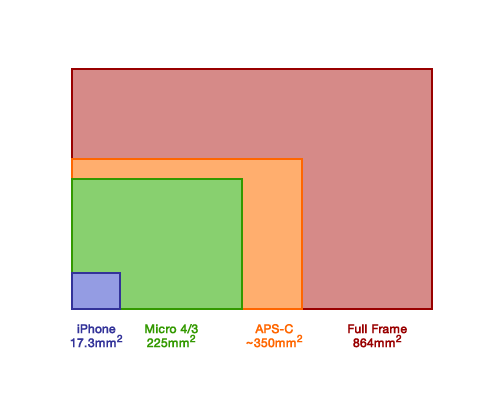
APS-C has a "crop" sensor. It is a bit smaller than full frame and does not perform as well in low light (more noise). However these bodies are cheaper and can still produce great photos. You can see above the sensor is still significantly larger than a smartphone. APS-C adds a 1.5x zoom to all lenses. This can be annoying in small spaces but advantageous for outdoor photography like wildlife and sports. You can use full frame lenses on a crop sensor body (within the same brand). APS-C lenses are usually cheaper but of lower quality.
Full frame has a larger sensor that will give you less noise in low light. It is also much easier to get background blur. Full frame also allows you to work in more cramped spaces. You *cannot* use APS-C lenses on a full frame body. However, the lenses meant for full frame cameras tend to be better quality in general.
If you can save up a little more and get a full frame body, I would recommend it. These bodies used to be geared more toward professional use, but since mirrorless cameras became popular, used full frame DSLRs have become much more accessible to those on a budget. Full frame cameras make it easier to get better results in challenging circumstances. And challenging conditions are really the main area where ILCs still kick a smartphone's ass.
For tight budgets I would recommend the following...
Canon or Nikon APS-C DSLR camera body
50mm f/1.8 lens (Nifty Fifty)
18-55mm APS-C lens (good for landscapes and portraits)
Yongnuo ETTL Flash
There are lenses called "superzooms" which can go from (as an example) 18-200mm or 70-300mm and other crazy focal lengths. That sounds fantastic and very versatile... but these are usually utter shite. You may be tempted to get one of these lenses hoping it can do everything you need, but there are no free lunches in lens land. Unless you are spending many thousands of dollars, the wider the focal range, the worse the lens will be.
When you stick to the 18-55mm range, you can be assured the images will be decent. And if you find yourself really needing a telephoto lens, you can save up and add it to your collection later on. The 18-55 will give you wide angle for landscapes all the way to slightly telephoto for portraits and moderately close wildlife. This lens cannot be used indoors or at night without a flash. Which is why I recommend the Nifty Fifty for that purpose. $100 for a moderately sharp low light lens is a no brainer.
Also, stick to Canon, Nikon, Sigma, or Tamron lenses. You can try exotic 3rd party lens brands when you know more what you are doing. And always make sure the lens has autofocus before buying.
It's hard to give you exact recommendations as used items are not reliably in stock. So I'm going to show you an example of the above, but I am not necessarily saying you should buy this *exact* combination. You might be able to get something similar with Nikon as well.
Canon 60D APS-C DSLR

50mm f/1.8 lens

Canon 18-55mm APS-C lens (EF-S mount)

Yongnuo TTL Flash

(I wouldn't recommend getting a used flash, as the Yongnuo is already a great price and you can't know if someone used the flash 100,000 times or 20 times.)
Altogether that is about $500. You can start with the 60D and the 50mm Nifty Fifty for $330 and add on the other two items later on.
My recommended full frame setup...
Full frame Canon or Nikon DSLR body
50mm f/1.8 lens (same as before)
24-70mm full frame zoom lens (full frame equivalent to 18-55mm)
ETTL Yongnuo flash (same as before)
And an example from KEH might be...
Canon 6D Full Frame DSLR


Canon 50mm f/1.8 Lens

Sigma 24-70mm Full Frame Zoom lens (EF mount)

Yonguo ETTL Flash

And that would be about $800 total.
Again, you can start with just the camera and 50mm lens and add the other items later. So invest $500 initially and go from there.
And just to give a Nikon example as well...
Nikon D600 Full Frame DSLR
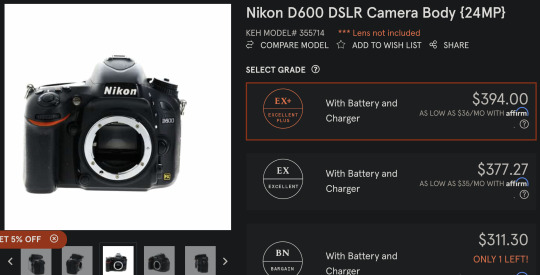
Nikon 50mm f/1.8 Lens

Tamron 24-70mm


Yonguo ETTL Flash (Nikon version)

I highly recommend researching any camera body and lens before purchase. I can vouch for the items above, but you should definitely check out some YouTube videos before buying.
All of the stuff on KEH and MBP is marked down in price for aesthetic reasons. They do test everything to make sure it is functional. If you care if the camera or lens looks pristine, it will cost a little extra. But if you don't mind if it is beat to hell, you can save some money. Ugly or not, you will get the same photos out of the gear. As I said, photography stuff is built to last for a long time. Almost all repairs are due to user damage and not defects. And usually defects manifest when the product is brand new.
Oh, I forgot about the tripod!
Amazon's $35 tripod is surprisingly decent. It even got a good review on a very picky tripod review site. I recommend starting with this and then upgrading when you know more what you need out of a tripod.
Amazon 60 inch Tripod
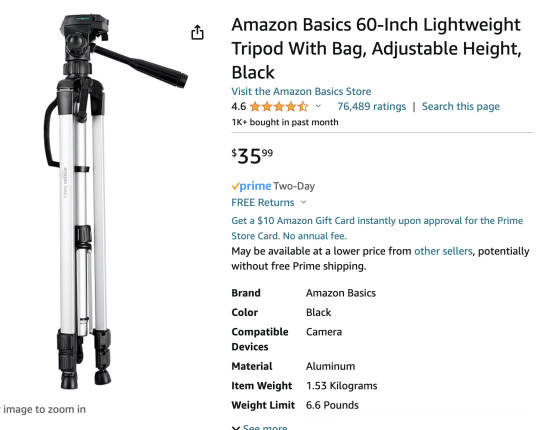
I worry I'm leaving out a lot of important information, but hopefully I can expand in the other post I am working on.
That said, if anyone is thinking of buying a camera and you are not sure about the items you selected, please feel free to message me and I will help you assess your choices. Please make sure you include a budget range when asking for buying advice.
I hope that helps. I will try to finish the more in depth post soon. And it will include tips for how to get better photos from your smartphone if you cannot afford an ILC at the moment.
Further resources...
Recipe for Landscape Photos Froggie's Encyclopedia of Lens Terms
204 notes
·
View notes
Text
These days, when Nicole Yelland receives a meeting request from someone she doesn’t already know, she conducts a multi-step background check before deciding whether to accept. Yelland, who works in public relations for a Detroit-based non-profit, says she’ll run the person’s information through Spokeo, a personal data aggregator that she pays a monthly subscription fee to use. If the contact claims to speak Spanish, Yelland says, she will casually test their ability to understand and translate trickier phrases. If something doesn’t quite seem right, she’ll ask the person to join a Microsoft Teams call—with their camera on.
If Yelland sounds paranoid, that’s because she is. In January, before she started her current non-profit role, Yelland says she got roped into an elaborate scam targeting job seekers. “Now, I do the whole verification rigamarole any time someone reaches out to me,” she tells WIRED.
Digital imposter scams aren’t new; messaging platforms, social media sites, and dating apps have long been rife with fakery. In a time when remote work and distributed teams have become commonplace, professional communications channels are no longer safe, either. The same artificial intelligence tools that tech companies promise will boost worker productivity are also making it easier for criminals and fraudsters to construct fake personas in seconds.
On LinkedIn, it can be hard to distinguish a slightly touched-up headshot of a real person from a too-polished, AI-generated facsimile. Deepfake videos are getting so good that longtime email scammers are pivoting to impersonating people on live video calls. According to the US Federal Trade Commission, reports of job and employment related scams nearly tripled from 2020 to 2024, and actual losses from those scams have increased from $90 million to $500 million.
Yelland says the scammers that approached her back in January were impersonating a real company, one with a legitimate product. The “hiring manager” she corresponded with over email also seemed legit, even sharing a slide deck outlining the responsibilities of the role they were advertising. But during the first video interview, Yelland says, the scammers refused to turn their cameras on during a Microsoft Teams meeting and made unusual requests for detailed personal information, including her driver’s license number. Realizing she’d been duped, Yelland slammed her laptop shut.
These kinds of schemes have become so widespread that AI startups have emerged promising to detect other AI-enabled deepfakes, including GetReal Labs, and Reality Defender. OpenAI CEO Sam Altman also runs an identity-verification startup called Tools for Humanity, which makes eye-scanning devices that capture a person’s biometric data, create a unique identifier for their identity, and store that information on the blockchain. The whole idea behind it is proving “personhood,” or that someone is a real human. (Lots of people working on blockchain technology say that blockchain is the solution for identity verification.)
But some corporate professionals are turning instead to old-fashioned social engineering techniques to verify every fishy-seeming interaction they have. Welcome to the Age of Paranoia, when someone might ask you to send them an email while you’re mid-conversation on the phone, slide into your Instagram DMs to ensure the LinkedIn message you sent was really from you, or request you text a selfie with a timestamp, proving you are who you claim to be. Some colleagues say they even share code words with each other, so they have a way to ensure they’re not being misled if an encounter feels off.
“What’s funny is, the low-fi approach works,” says Daniel Goldman, a blockchain software engineer and former startup founder. Goldman says he began changing his own behavior after he heard a prominent figure in the crypto world had been convincingly deepfaked on a video call. “It put the fear of god in me,” he says. Afterwards, he warned his family and friends that even if they hear what they believe is his voice or see him on a video call asking for something concrete—like money or an internet password—they should hang up and email him first before doing anything.
Ken Schumacher, founder of the recruitment verification service Ropes, says he’s worked with hiring managers who ask job candidates rapid-fire questions about the city where they claim to live on their resume, such as their favorite coffee shops and places to hang out. If the applicant is actually based in that geographic region, Schumacher says, they should be able to respond quickly with accurate details.
Another verification tactic some people use, Schumacher says, is what he calls the “phone camera trick.” If someone suspects the person they’re talking to over video chat is being deceitful, they can ask them to hold up their phone camera to their laptop. The idea is to verify whether the individual may be running deepfake technology on their computer, obscuring their true identity or surroundings. But it’s safe to say this approach can also be off-putting: Honest job candidates may be hesitant to show off the inside of their homes or offices, or worry a hiring manager is trying to learn details about their personal lives.
“Everyone is on edge and wary of each other now,” Schumacher says.
While turning yourself into a human captcha may be a fairly effective approach to operational security, even the most paranoid admit these checks create an atmosphere of distrust before two parties have even had the chance to really connect. They can also be a huge time suck. “I feel like something’s gotta give,” Yelland says. “I’m wasting so much time at work just trying to figure out if people are real.”
Jessica Eise, an assistant professor studying climate change and social behavior at Indiana University-Bloomington, says that her research team has been forced to essentially become digital forensics experts, due to the amount of fraudsters who respond to ads for paid virtual surveys. (Scammers aren’t as interested in the unpaid surveys, unsurprisingly.) If the research project is federally funded, all of the online participants have to be over the age of 18 and living in the US.
“My team would check time stamps for when participants answered emails, and if the timing was suspicious, we could guess they might be in a different time zone,” Eise says. “Then we’d look for other clues we came to recognize, like certain formats of email address or incoherent demographic data.”
Eise says the amount of time her team spent screening people was “exorbitant,” and that they’ve now shrunk the size of the cohort for each study and have turned to “snowball sampling” or having recruiting people they know personally to join their studies. The researchers are also handing out more physical flyers to solicit participants in person. “We care a lot about making sure that our data has integrity, that we’re studying who we say we’re trying to study,” she says. “I don’t think there’s an easy solution to this.”
Barring any widespread technical solution, a little common sense can go a long way in spotting bad actors. Yelland shared with me the slide deck that she received as part of the fake job pitch. At first glance, it seemed like legit pitch, but when she looked at it again, a few details stood out. The job promised to pay substantially more than the average salary for a similar role in her location, and offered unlimited vacation time, generous paid parental leave, and fully-covered health care benefits. In today’s job environment, that might have been the biggest tipoff of all that it was a scam.
27 notes
·
View notes
Text

Discover how automating data collection can revolutionize your business operations. Say goodbye to manual processes and hello to streamlined efficiency.
Ready to get regulatory data at cost-effective rates and a faster turn around time? Contact us today to learn more about our automated data collection solutions. https://www.damcogroup.com/blogs/how-automated-web-data-collection-reduces-operational-costs
0 notes
Text
Wakey wakey~
You find yourself struggling on the curiously shaped padded white exam table which slopes downward from your head ~ the thick straps keep your arms forward your waist is similarly held snug, your legs are gently spread with enough wiggle room to kick nervously ~ particularly as the hum of machinery starts and viewing panels open from all sides high above. Shadowy figures seen glaring down at your plight are joined by the glowering red lights of observation equipment winking to life all around ~ your protests and squeaks echo around the sanitized room, the humming becomes a buzz as you sense the presence of something heavy and imposing approaching your legs~
You can kick all you like, the machinery can't be deterred as it deploys padded probes to the backs of your legs and begins stimulating with tickly tingly vibrations. Activity rises in the observation deck and the equipment feeds on your reactions, every noise and twitch and struggle is captured and analyzed ~ you can almost see the line of data pulsing through the equipment as every big reaction causes the machine to recalibrate and further massage on your most sensitive spots behind your knees and up the backs of your thighs ~ annnd up to your tush, humming and stimulating your booty to its satisfaction~
Your squeaks turn to giggles and gasps, the relentless machinery cataloging your body and coaxing it of all the sensitive secrets. You feel spent and worked over, probed and defeated ~ and yettt ~ the treatment is only starting. The machinery surges in energy, the probes attach to the backs of your thighs and tush cheeks in strategic locations. With a gentle push they hold you taut, hold your cheeks gently apart ~ as the machine spools up its routine and the sound of spinning orbital buffers fills the room. Their progress is temporarily delayed by a swarm of mechanical hands, clicking as they flex their fingers and work hurriedly to spray your rear quarters with a cleansing solution. Others follow behind with soft wipes, working away the imperfections. This attention, mechanical or not, puts you into a fury of blush and gasps ~ and it does not go unnoticed.
You glance back and see them approach. Your protests and pleads fall on nonexistent sound receptors. The machine cannot be bargained with. The observers above certainly hear your begs as the soft whirling surfaces are approaching your twitchy sensitive spots, and note each one. Soft motorized fluff invades the curves of your back legs, buffing in lines to maximize your stimulation. Two more join them, deployed at the curves under your buttcheeks. From your vantage point they are a blur of green but you absolutely feel every soft fiber as it is whipped over your skin, barely touching yet drawing out so much sensation ~ and giggles.
With a whine, another piece of equipment deploys. You shriek uselessly seeing the wheel approaching with a buzz. Each spoke sprouts a feather of soft stiffness, and the circle begins turning slowly as it is brought closer and closer between your legs. At first it's the tiniest breeze, teasing at your honey spot and royal area and edges of your tush cheeks. You think you can handle it, maybe even find it a good distraction from the buffers as they polish around your legs and behind your knees now. But then it grows closer. The breeze becomes a slowly growing itch, a little ember of want. Every feather slides down and caresses between your cheeks, over your hole and downward. That slow path quickly becomes worn in with gigglish sensation~
You get the slightest respite between feathers, but their time tickling at your line of ticklishness grows. The wheel is now slowing slightly each time a feather makes contact, then picks up speed after it passes your royal area. The adjustments are slight but they draw out your ticklish agony so much. The activity above rises. Eyes are stuck to glass, notes are taken rapidly. The equipment is burning hotly trying to consume all your data.
And then the wheel reverses~
You scream out in desperate wanting needing laughs. The feathers caress one after another after another, touching your royal area with the slightest slap before passing you to the next. The kiss at your honeyspot becomes an explosion of tickles. The wheel never stops turning. The buffers taunt and work to engage with skipping motions between each feather touch so that you are constantly passed back and forth from sensations. You want it so badly, you want that release. More buffers add to your desperation, their fluff invading under your toes and along your soles. Your muscles ache, your royal areas throb. Your whimpers only seem to encourage the operators, as you can start to recognize the motions above precipitating another surge of machine activity.
When your mewling overtakes your giggles, the wheel pulls back to give the taunting breeze so the buffers can work around your cheeks and small of your back and even sneak at your hips to make you buck and laugh. When your laughs become high pitched and silly, the orbital discs slow and the wheel engages at full contact to make you moan and giggle and yelp for more.
And more you get ~ as with a flurry of motion in the observation deck followed by what appeared to be a minor debate, the room trembles and through a complex set of mechanical squirms and shrieks, you find yourself flipped over, facing skyward under brightening observation lights. Strapped down tightly, legs gently spread, the wheel soon approaches once more surrounded on all sides by snaking orbital buffers ~ and a burst of newcomers, their intense blue-white lights igniting as they buzz furiously like a swarm of bees. Tiny spotlights illuminate under your arms, around your tummy, in your navel, along your neck, over your chest buttons, on your hip dips, and between your toes. The vibrating tools begin their humming inquisition as if questioning your hot spots with their tips right as the buffers make strides across your longer tickle zones - sides, ribs, arms, legs, and thighs. And that wheel, that wicked wicked wheel, extends its feathers once more and begins the endless caress over your royal area.
You want the ticklecum so bad~
and can only hope it's on the menu today~
129 notes
·
View notes
Text
After some small-scale demonstrations of ‘direct air capture’ (DAC) technology, which suck CO2 out of the atmosphere by chemical means, the 2022 US Bipartisan Infrastructure Law has devoted $3.5 billion to developing four DAC hubs. But it’s clear to me that deploying them to remove CO2 from the atmosphere is pointless until society has almost completely eliminated its polluting activities.
To understand why, think of CDR [carbon dioxide removal] as a time machine. Take the proposed US DAC hubs, for example. Each facility is eventually expected to extract one million tonnes of CO2 each year.
In 2022, the world emitted 40.5 billion tonnes of CO2 (P. Friedlingstein et al. Earth Syst. Sci. Data 14, 4811–4900; 2022). At that rate, for every year of operation at its full potential, each hub would take the atmosphere back in time by almost 13 minutes, but in the time it took to remove those 13 minutes of CO2, the world would have spewed another full year of CO2 into the atmosphere.
Meanwhile, if everyone on Earth planted a tree — 8 billion trees — it would take us back in time by about 43 hours every year, once the trees had matured.
The time-machine analogy reveals just how futile CDR currently is.
We have to shift the narrative as a matter of urgency. Money is going to flood into climate solutions over the next few years, and we need to direct it well. We must stop talking about deploying CDR as a solution today, when emissions remain high — as if it somehow replaces radical, immediate emission cuts.
Carbon dioxide removal is not a current climate solution — we need to change the narrative, David T. Ho, 4/4/2023 in nature ( doi: https://doi.org/10.1038/d41586-023-00953-x )
372 notes
·
View notes